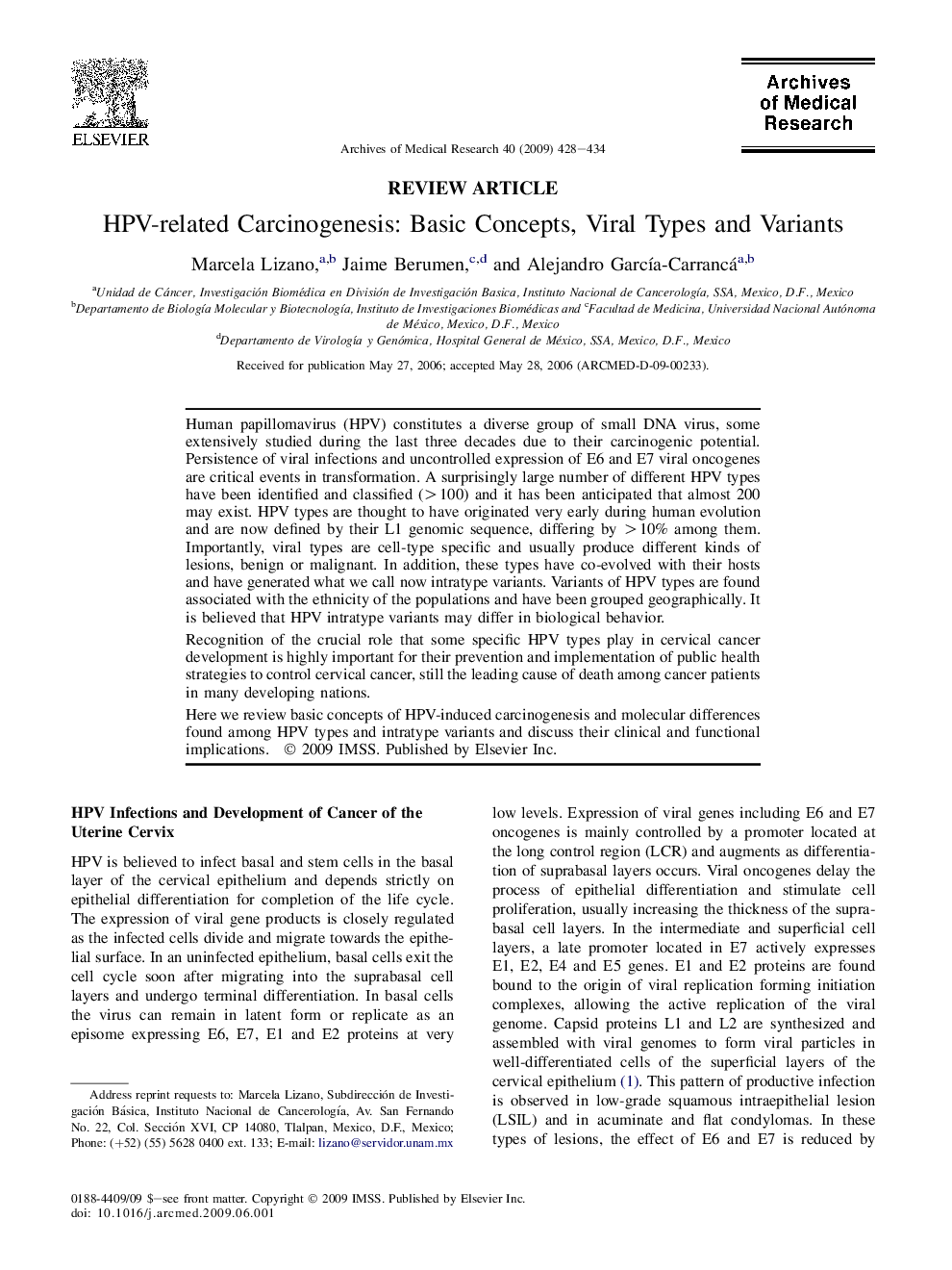| Article ID | Journal | Published Year | Pages | File Type |
|---|---|---|---|---|
| 3447025 | Archives of Medical Research | 2009 | 7 Pages |
Human papillomavirus (HPV) constitutes a diverse group of small DNA virus, some extensively studied during the last three decades due to their carcinogenic potential. Persistence of viral infections and uncontrolled expression of E6 and E7 viral oncogenes are critical events in transformation. A surprisingly large number of different HPV types have been identified and classified (>100) and it has been anticipated that almost 200 may exist. HPV types are thought to have originated very early during human evolution and are now defined by their L1 genomic sequence, differing by >10% among them. Importantly, viral types are cell-type specific and usually produce different kinds of lesions, benign or malignant. In addition, these types have co-evolved with their hosts and have generated what we call now intratype variants. Variants of HPV types are found associated with the ethnicity of the populations and have been grouped geographically. It is believed that HPV intratype variants may differ in biological behavior.Recognition of the crucial role that some specific HPV types play in cervical cancer development is highly important for their prevention and implementation of public health strategies to control cervical cancer, still the leading cause of death among cancer patients in many developing nations.Here we review basic concepts of HPV-induced carcinogenesis and molecular differences found among HPV types and intratype variants and discuss their clinical and functional implications.
